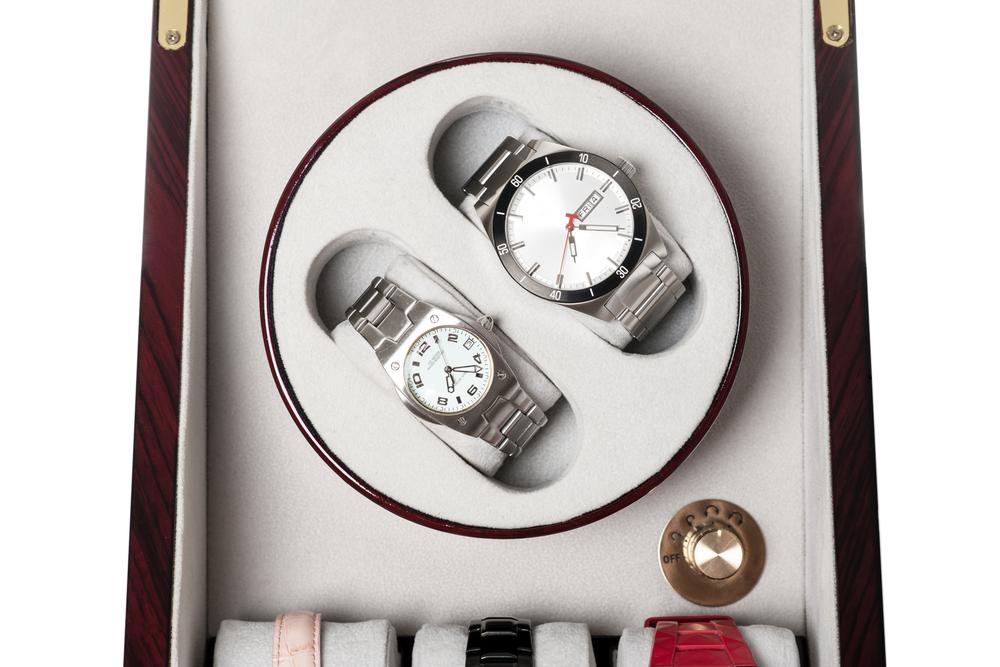Watches have been worn for decades, by both men and women, as a symbol of wealth, status, and style. Over the years, they have evolved from portable spring-driven clocks to automatic self-winding gadgets that can operate through mechanical wrist movements.
The internal working of automatic watches sounds incredibly intriguing until you realize you haven't worn your watch for some time. With the loss of its primary power source, the timepiece has stopped working and needs to be readjusted.
The ultimate solution to this problem is to invest in a watch winder. Read this article to learn more about this useful device that keeps your automatic watch operational. We also mention some important buying tips to help you decide on the perfect match for your timepiece.
What Is a Watch Winder?
A watch winder is a device, either battery-powered or plug-in, that keeps your watch moving to replicate the effect of it being worn. It is unarguably the best partner your automatic watch can get in your absence.
The operation of a watch winder closely resembles natural wrist movements. It has a rotating surface, such as a turntable, that holds the watch and rotates it a few turns daily. This oscillation winds the mainspring and protects it from power depletion.
Watch winders upkeep automatic watches and ensure they display accurate time even if left unattended for several months. They are essential for people owning more than one timepiece to save them the effort required for manual winding.
What to Look for in a Watch Winder
Various watch winders are available in the market, differing in size, design, and build quality. To save you from confusion and help you pick the ideal match, here is a list of features to consider before investing in a watch winder for your valuable timepiece.
1. Rotation Modes
The first thing to consider when purchasing a watch winder is its rotational settings. Automatic watches require a specific number of turns per day(TPD). Aim for a watch rotator that lets you adjust the TPD settings according to the watch model (mentioned in the manual guide) and has a timer to facilitate intermittent rotation.
2. Rotation Direction
The direction of the rotation plays a crucial role in determining the compatibility of a watch winder with your watch. Always look for a winder that facilitates bidirectional, clockwise, and anticlockwise movements for compatibility with maximum models.
Avoid devices that only rotate in one direction. This can put even more strain on the movement as it doesn't resemble the natural winding motion of a wrist.
3. Electronic Circuitry
The best indicator of a high-quality electronic circuitry system is smooth and noiseless operation. Always test the watch winder for loud, disruptive noises when placed in quiet settings like study rooms or bedrooms. Also, decide whether you prefer a battery-powered or cable-operated watch rotator based on your desired portability level.
4. Number of Slots
Watch winding containers come in all shapes and sizes. The newer, advanced models can handle and charge several automatic watches at a single time. However, the more slots a winder has, the more expensive it will be.
Opt for a winder with sufficient slots to oscillate those watches you rarely wear while giving your remaining timepieces a manual winding.
5. Motor Quality
Paying attention to the motor quality helps ensure the longevity of the watch winder. Look for sturdy components and a functional motor that keep the turntable rotating smoothly. Additionally, cushioning, such as soft fabric lining and padded walls, can help protect your timepiece from accidental scratches and damage.
6. Design
Although it is not mandatory, an aesthetically pleasing watch winder can enhance the quality of your watch collection. Watch winders are available in wood, acrylic, leather, glass, metal casing, and cube and cuboid structures. Go for a design that compliments well with the display area for your precious collectibles.
Does the Watch Winder Cause Damage?
The answer is no. As long as the winder turns a set number of TPD, your watch is safe from getting damaged. A common misunderstanding is that the winders keep the watch's mainspring fully wound, and this constant feeding of energy can damage the watch. This is incorrect. Modern self-winding watches use a slip-clutch that gets engaged once the mainspring is fully wound, protecting the timepiece from overwinding.
Most importantly, when watch winders are set to the correct TPD, they only rotate a certain number of times to keep the watch wound at the same level. In simpler words, the watch is rotated only enough times to replenish the energy since it was last used.
However, while watch winders don't cause any immediate harm to the ticking devices, they can still lead to gradual wear and tear over the years.
Conclusion
Whether it was passed down to you as a family heirloom or gifted by someone special, everybody likes to show off their wristwatch collection. Watch winders are the best companion for all those lonesome watches in your collection that don't get frequent action.
There is an extensive market for watch winders, but ultimately, it all comes down to you. Select the correct type of watch winder depending on your budget, watch model, and preference.
If you still have questions about choosing the best watch winder, feel free to contact us. We are always happy to help educate our customers about automatic watches and what they can do to keep them running for a long time. Happy collecting!






Share:
Top Independent Watch Brands Every Collector Should Know